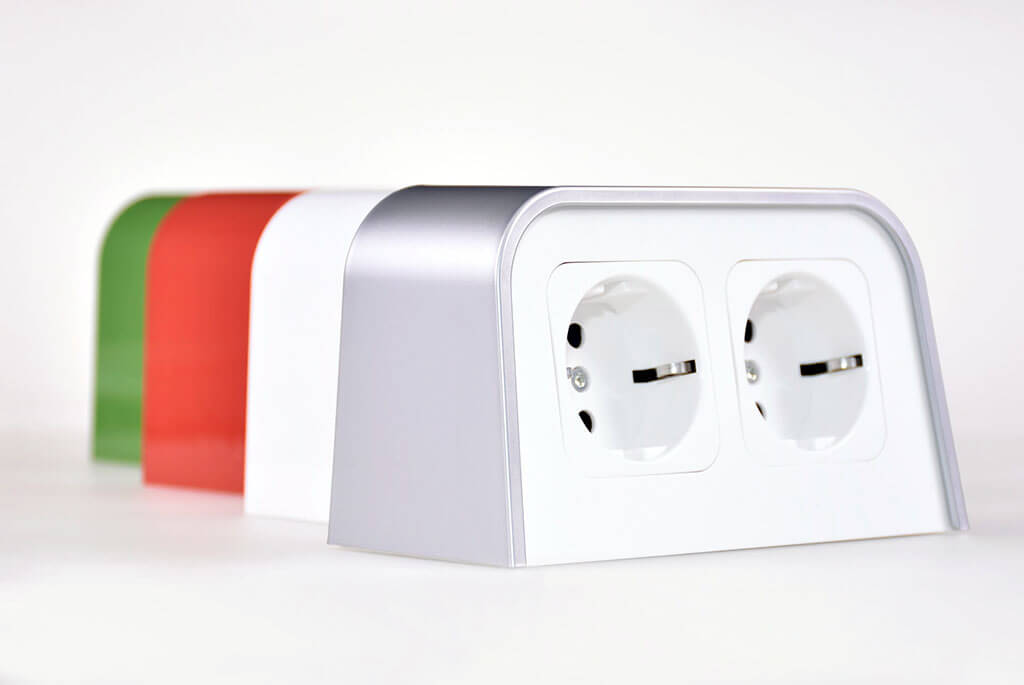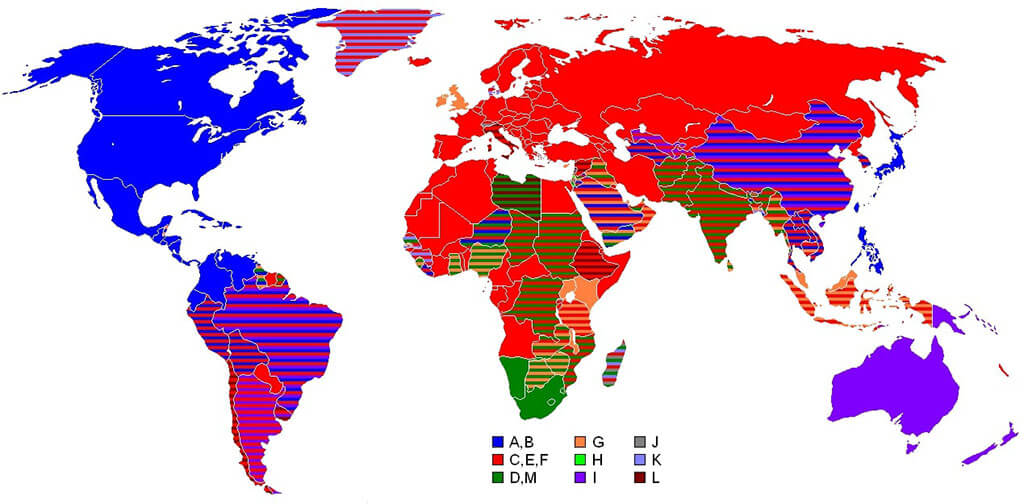Plugs and Sockets in Turkey: A Complete Guide for Travelers
Table of Contents
ToggleTraveling to Turkey, especially the beautiful Fethiye region, is an exciting experience! But before you arrive, it’s crucial to understand the electrical system to ensure your devices stay powered safely.
Turkey uses Type C and Type F electrical plugs, operating at 230V and 50Hz. If you’re coming from a country with different plugs or voltage, you’ll likely need an adapter, and possibly a voltage converter.
This guide explains everything you need to know to keep your devices powered safely in Turkey.
But before you pack your bags, let’s talk about something important: power plugs and sockets.
This essential guide, created in collaboration with an electrical expert, will help you understand the ins and outs of Turkish electrical systems so that you can keep your devices charged and stay connected throughout your journey.
Plug Types in Turkey
Turkey utilizes two main types of electrical plugs:
Type C (Europlug)
Also known as the Europlug (CEE 7/16), Type C has two round pins. This is a common plug type across much of Europe.
It’s typically used for low-power devices like phone chargers, laptops (often), and cameras. It’s important to note that Type C plugs are ungrounded.
Type C plug is the second most commonly used plug type In Turkey. Type C plug is characterized by two round pins. You’ll find these electrical outlets in most hotels, homes, and public spaces.
Here’s a quick overview of the plug types in Turkey:
- Type C: Two round pins, ungrounded
- Type E: Two round pins with a hole for the grounding pin
- Type F: Two round pins with a grounding clip
Type F (Schuko)
Type F, also called “Schuko” (CEE 7/4 or CEE 7/7), also features two round pins, but crucially, it includes two grounding clips on the sides. These clips provide an extra safety measure.
Type F is used for higher-power devices and is designed to accept both Type C and Type F plugs. This makes it versatile and safe for a wider range of appliances.
Voltage in Turkey: 230V, 50Hz
Turkey’s electrical system operates at 230 volts and a frequency of 50 Hz.
This differs from North America, which uses 110-120V and 60Hz.
The UK also operates at 230V and 50Hz, but uses different plug types.
Understanding this difference is crucial because using a device designed for a different voltage without a converter can damage it, potentially causing a fire.
The frequency difference can also affect the operation of some devices, particularly those with motors or timing mechanisms.
Always check the label or user manual of your device to make sure it’s compatible with Turkish electrical standards.
Do You Need a Voltage Converter?
This is a critical question for travelers. Whether you need a voltage converter depends entirely on your devices:
Dual-Voltage Devices
Most modern electronic devices, including laptops, phone chargers, and camera chargers, are dual-voltage.
This means they are designed to operate on a range of voltages, usually between 100V and 240V.
To check if your device is dual-voltage, look for the input voltage range on the device’s power adapter or the device itself. It will usually be printed near the plug or on a label.
If it says something like “INPUT: 100-240V ~ 50/60Hz”, you do not need a voltage converter. You will only need a plug adapter.
Single-Voltage Devices
If your device only lists a single voltage (e.g., 120V) or a narrow range that doesn’t include 230V, you will need a voltage converter (also known as a transformer).
This is more common with older devices or some appliances like hairdryers or curling irons (although many travel versions are now dual-voltage).
Using a 120V-only device on 230V without a converter will almost certainly damage it, and could be dangerous.
Frequency (50Hz)
While most modern electronics are unaffected by the frequency difference between 50Hz (Turkey) and 60Hz (North America), some devices with motors or timing mechanisms might run slightly faster or slower.
If you’re unsure, it’s always best to consult your device’s manual.
Choosing the Right Adapter
A basic plug adapter simply changes the shape of your device’s plug to fit Turkish sockets (Type C or F).
It does not change the voltage. If your device has a three-prong plug (grounded), you should use a Type F adapter to maintain the grounding connection for safety.
A universal adapter is a great investment as it can be used in many countries with different plug types.
Many adapters also conveniently include USB ports for charging phones and tablets.
Where to Buy Adapters
You have several options for purchasing adapters:
- Before You Travel: Online retailers like Amazon and travel stores offer a wide selection.
- At the Airport: Adapters are usually available at airports, though often at a higher price.
- In Turkey: You can find adapters in electronics stores, tourist shops, and some supermarkets throughout Turkey, including the Fethiye region.
Safety Tips
Always prioritize safety when dealing with electricity:
- Check Voltage: Always double-check the voltage requirements of your devices before plugging them in.
- Don’t Overload Adapters: Avoid plugging multiple high-power devices into a single adapter.
- Inspect Adapters: Regularly check adapters for any signs of damage before using them.
- Unplug When Not in Use: Unplug adapters and devices when they are not in use.
Now that you are ready to power your devices, book your trip and enjoy Turkey!
I'm from the US/Canada. Do I need a voltage converter for my phone/laptop in Turkey?
Most likely, you don't need a voltage converter for your phone, laptop, or camera charger. These devices are usually dual-voltage (100-240V). Check the label on your device's power adapter.
If it says "INPUT: 100-240V," you only need a plug adapter to fit the Turkish Type C or Type F sockets. If it only shows 110V or 120V, you will need a voltage converter.
What's the difference between a plug adapter and a voltage converter?
A plug adapter simply changes the shape of your plug to fit a different type of socket. It does not change the voltage. A voltage converter (or transformer) changes the voltage from one level to another (e.g., from 230V to 120V). You only need a converter if your device is not dual-voltage.
My hairdryer is from the UK. Can I use it in Turkey?
The UK and Turkey use the same voltage (230V), but different plug types. You'll need a plug adapter to fit the Turkish Type C or Type F sockets. Crucially, check if your hairdryer is dual-voltage. Some travel hairdryers are, but many standard UK hairdryers are not. If your hairdryer is only rated for 230V, it will work with just an adapter. If it's rated for a different voltage (unlikely, but check), you'd need a converter, even from the UK.
Can I buy a plug adapter in Turkey (e.g., in Fethiye)?
Yes, you can easily buy plug adapters in Turkey. Electronics stores, tourist shops, and even some supermarkets in tourist areas like Fethiye will sell them. You can also find them at airports, but they might be more expensive there. It's often best to buy one before you leave, just to be prepared.
Is it safe to use a plug adapter with a three-prong (grounded) plug in a two-prong (ungrounded) socket in Turkey?
While a Type C adapter will physically allow you to plug a three-prong device into a two-prong (Type C) socket, you will lose the grounding protection.
For maximum safety, use a Type F adapter and plug into a Type F socket (which has grounding clips) whenever possible if your device has a three-prong plug.
This is especially important for higher-power devices. If you must use a Type C adapter with a three-prong device, be extra cautious and ensure the device is in good condition.




